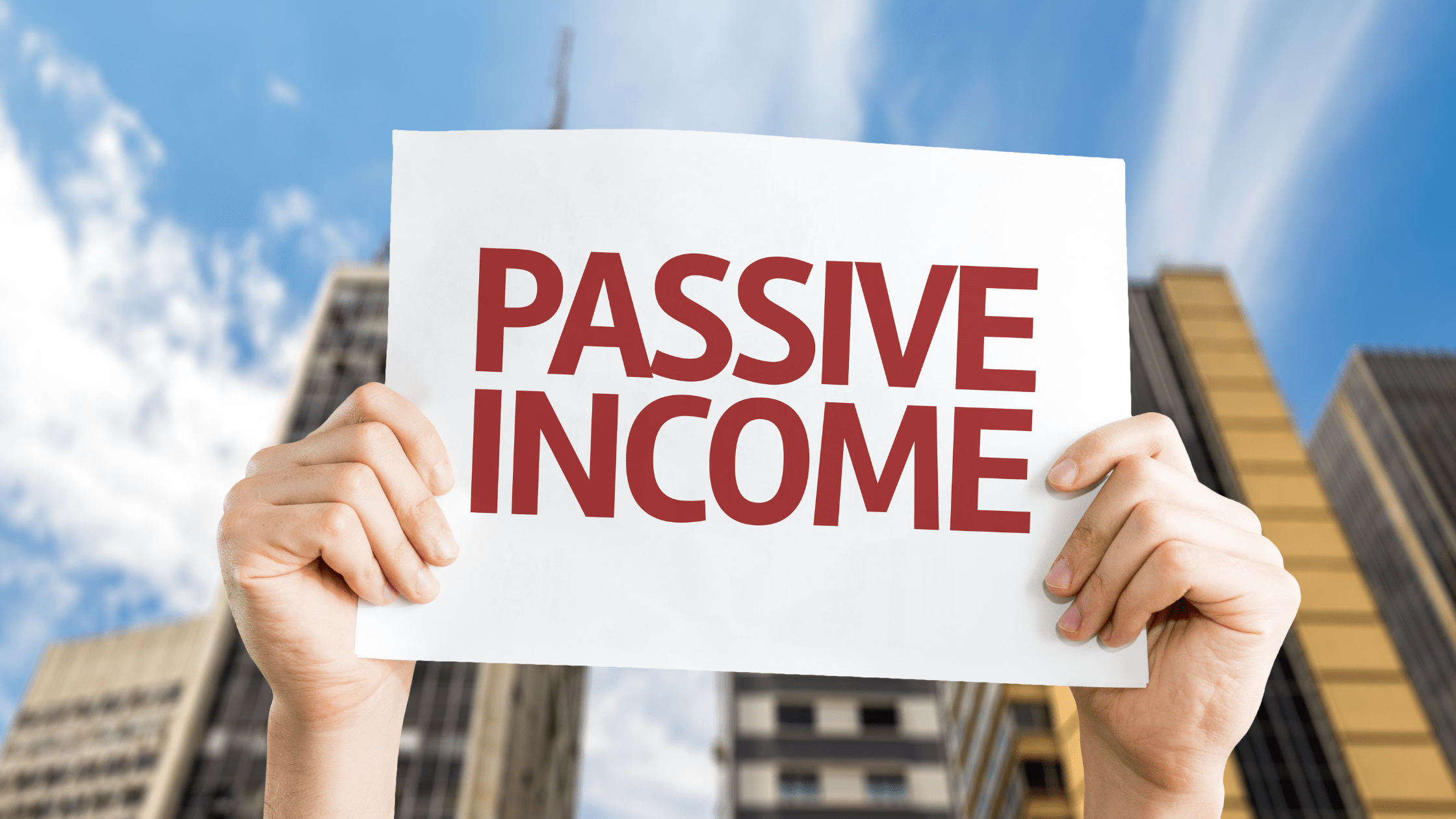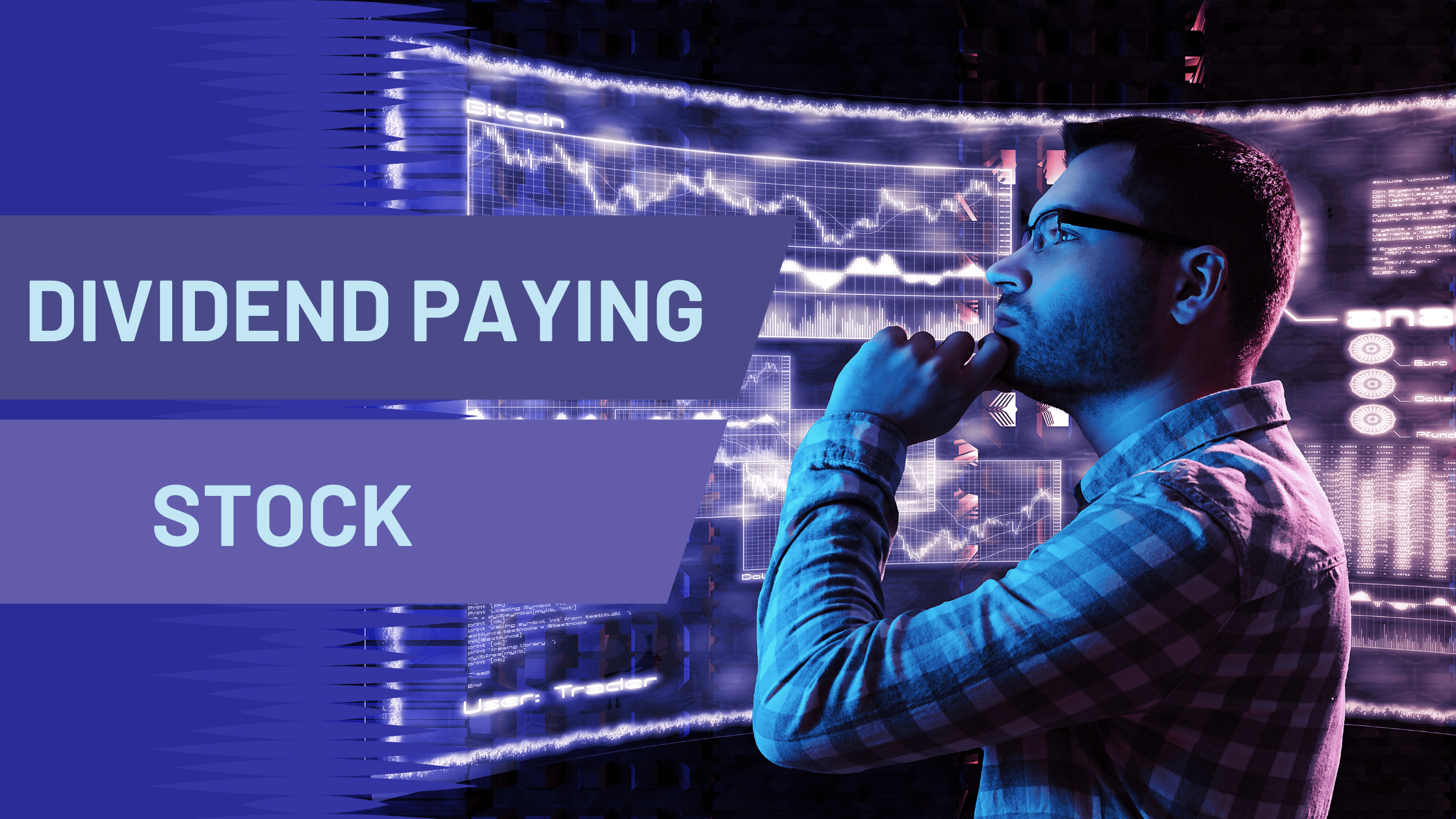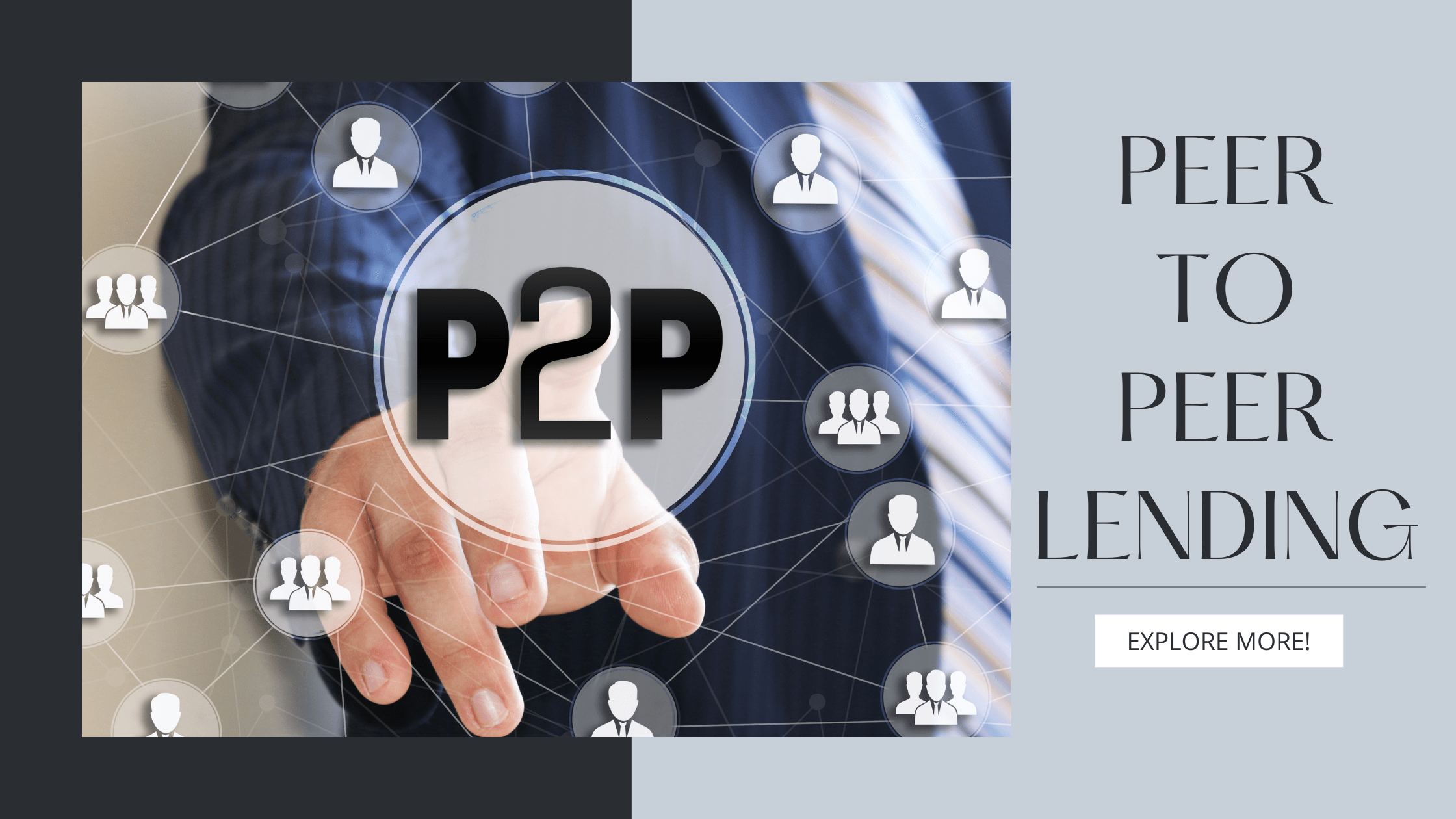Are you tired of the daily grind of a 9-5 job?
Are you looking for a way to break free from the monotony?
Are you looking for a passive income idea to achieve financial independence?
If so, you’re not alone.
Many people dream of living a comfortable and luxurious lifestyle, traveling the world, and spending time with their loved ones without worrying about money.
The good news is that it’s possible with passive income.
What Is Passive Income?

Passive income is the money you earn without actively working for it. It’s the opposite of active income, which is the money you earn by trading your time for money.
With passive income, you can make money while you sleep, travel, or spend time with your family.
The beauty of passive income is that it allows you to create a stream of income that requires minimal effort and time investment once set up.
Passive income is essential for achieving financial freedom because it allows you to create a stable source of income that’s not tied to your time or location.
Unlike active income, which requires you to work long hours and trade your time for money, passive income can help you break free from the 9-5 grind and create a more flexible lifestyle.
I discovered the power of passive income a few years ago when I was struggling to make ends meet. I was working long hours at a job I didn’t enjoy, and I was barely making enough money to pay my bills.
I knew there had to be a better way, so I started researching ways to make passive income.
As I dug deeper into the world of passive income, I discovered that there are countless ways to make money without actively working for it.
I tried out different passive income ideas, and I was amazed at how quickly I started to see results.
I started earning money while I slept, traveled, and spent time with my family.
In this article, I’ll be sharing 27 profitable passive income ideas that you can start implementing today.
Whether you’re a student, stay-at-home parent, or a full-time employee, these ideas can help you create a stable source of income that’s not tied to your time or location.
We’ll be covering various passive income streams for you to explore and thank me later.
So, sit back, relax, and get ready to learn about the power of passive income and how you can start creating your own stream of income that will give you the financial freedom you deserve.
Let’s get started!
Benefits of Passive Income:

Passive income is a powerful tool that can help you achieve financial freedom and create the lifestyle of your dreams.
Here are some of the benefits of passive income:
1. Financial stability: Passive income can provide you with a stable source of income that is not dependent on a traditional job. With passive income, you can diversify your income streams and reduce your reliance on a single source of income. This can help you weather financial storms and give you the peace of mind that comes with knowing that you have multiple sources of income.
- Example: Imagine that you have a rental property that generates $1,000 per month in passive income. Even if you were to lose your job, you would still have this $1,000 coming in each month to help cover your expenses.
2. Time freedom: Passive income can also give you the freedom to spend your time as you wish. Since passive income streams require little to no ongoing effort to maintain, you can spend your time on the things that matter most to you, such as family, travel, or hobbies.
- Example: Let’s say that you have a successful blog that generates passive income through affiliate marketing. With this income stream in place, you can take a break from blogging for a few months to travel the world or spend time with your family, without worrying about losing income.
3. Ability to generate income while you sleep: Passive income streams can generate income for you 24/7, without requiring your constant attention. This means that you can make money while you sleep, or while you’re busy with other activities.
- Example: You might have a stock portfolio that generates dividends each quarter, even if you’re not actively managing the portfolio. This allows you to earn income without having to actively trade stocks.
4. Flexibility: Passive income can also provide you with flexibility in terms of how you earn income. With passive income, you can earn money through a variety of channels, such as rental income, affiliate marketing, or investing.
- Example: Let’s say that you have a rental property that generates passive income. You can also earn passive income through affiliate marketing, selling digital products, or investing in dividend-paying stocks. By diversifying your income streams, you can create a flexible and resilient source of income.
5. Reduced stress: Passive income can also reduce stress and help you enjoy life more. With multiple sources of income, you can reduce your financial stress and feel more secure about your financial future. This can allow you to focus on the things that matter most to you, such as family, friends, and hobbies.
- Example: If you have multiple sources of passive income, such as rental income, dividends, and affiliate marketing income, you can reduce your stress and feel more secure about your financial future, which can help you enjoy life more.
Passive income has numerous benefits that can help you achieve financial freedom, time freedom, and reduced stress.
By diversifying your income streams and building passive income streams, you can create a flexible and resilient source of income that allows you to live life on your own terms.
Before going into the full explanation, below is the list of the 27 different profitable passive income ideas that will make you money while you sleep.
27 profitable passive income ideas:
- Investing in dividend-paying stocks
- Rental properties
- Investing in index funds or ETFs
- Peer-to-peer lending
- Creating and selling digital products like eBooks, courses, or templates
- Investing in real estate crowdfunding platforms
- Creating and selling physical products on marketplaces like Amazon FBA or Etsy
- Creating a YouTube channel and earning ad revenue
- Creating and monetizing a podcast
- Creating and selling stock photos or graphics
- Investing in a high-yield savings account or CD
- Investing in rental storage units
- Building and monetizing a blog or website with affiliate marketing
- Renting out a spare room on Airbnb
- Creating and selling a mobile app
- Investing in a rental car fleet
- Investing in a solar energy project
- Renting out a car or RV on a peer-to-peer platform
- Investing in a billboard or other outdoor advertising
- Investing in a vending machine business
- Owning and renting out parking spaces
- Creating and selling online courses
- Investing in a franchise
- Renting out a boat or yacht on a peer-to-peer platform
- Investing in a wind energy project
- Renting out storage space in a warehouse or garage
- Investing in a laundromat and automated car wash.
To make it easier for you to get started with any of your choices from the above mentioned, the 27 profitable passive income ideas have been divided into different categories below:
1. Investing:
- Investing in dividend-paying stocks
- Peer-to-peer lending
- Real estate crowdfunding platforms
- Investing in a vending machine business
- Investing in a solar energy project
- Investing in a wind energy project
2. Real Estate:
- Rental properties
- Renting out a spare room on Airbnb
- Investing in rental storage units
3. Online Business:
- Creating and selling digital products like eBooks, courses, or templates
- Creating and selling physical products on marketplaces like Amazon FBA or Etsy
- Building and monetizing a blog or website with affiliate marketing
- Creating and selling a mobile app
- Creating and selling online courses
4. Marketing:
- High-yield savings accounts or CDs
- Investing in a billboard or other outdoor advertising
- Creating and selling stock photos or graphics
- Creating a YouTube channel and earning ad revenue
5. Freelancing:
- Renting out a car or RV on a peer-to-peer platform
- Owning and renting out parking spaces
- Investing in a rental car fleet
- Renting out storage space in a warehouse or garage
6. Crypto:
- Investing in index funds or ETFs
Others:
- Creating and monetizing a podcast
- Investing in a solar energy project
- Investing in a laundromat and automated car wash.
- Owning and renting out parking spaces
27 profitable passive income ideas for unlocking financial freedom:
If creating a passive income empire and building wealth is part of your goals this year, check out the following passive income business ideas below.
It will be of great help to you because you will understand in detail how they work, risks involved, rewards and success stories of people that have opened the vault of wealth with these passive income ideas.
After reading this article to the end, anyone you decide to choose will surely make you a lot of money even while you sleep.
So let’s get started.
1. Investing in Dividend-Paying Stocks:

Are you looking for a way to generate passive income without doing much work?
Investing in dividend-paying stocks might be the perfect solution for you.
In this guide, we’ll explain what dividend-paying stocks are and how they work, highlight the pros and cons of this passive income idea, and share some success stories of people who have made money using this strategy.
What are Dividend-Paying Stocks?
Dividend-paying stocks are stocks that pay a portion of their earnings as dividends to shareholders.
Dividends are usually paid out quarterly and are a way for companies to distribute profits to their investors.
Investors can choose to reinvest their dividends to buy more shares of the company, or they can choose to receive the dividends as cash.
How does it work?
Investing in dividend-paying stocks is simple. First, you need to find a stock that pays a dividend.
You can use online stock screeners or consult with a financial advisor to find the best dividend-paying stocks.
Once you have identified a stock, you can purchase shares through a brokerage account.
As long as you own the shares, you will receive dividend payments.
Pros:
- Passive income stream: Dividend payments provide a steady stream of income without requiring any additional work.
- Potential for long-term growth: Many dividend-paying stocks also have the potential for long-term growth, which can increase the value of your investment over time.
- Diversification: Investing in dividend-paying stocks can be a way to diversify your portfolio and reduce risk.
Cons:
- Limited income potential: Dividend payments are usually a small percentage of the stock’s price, so the income potential may be limited compared to other passive income ideas.
- Risk: Like any investment, investing in dividend-paying stocks carries risk. The stock price may go down, resulting in a loss of investment.
- Requires research and monitoring: Finding the best dividend-paying stocks and monitoring their performance requires research and ongoing attention.
Success Stories:
- Warren Buffett: The Oracle of Omaha is a famous investor who has generated substantial wealth through investing in dividend-paying stocks. His Berkshire Hathaway portfolio includes many well-known dividend-paying stocks, such as Coca-Cola and Apple.
- John D. Rockefeller: The oil magnate was known for his astute investing strategies, including investing in dividend-paying stocks. His portfolio included companies like Standard Oil and New York Central Railroad.
In conclusion, investing in dividend-paying stocks can be a great way to generate passive income. With a little research and ongoing monitoring, you can create a portfolio of dividend-paying stocks that can provide you with a steady stream of income for years to come.
However, like any investment, it carries risk, so it’s important to do your due diligence before investing.
With the right strategy and mindset, you too can join the ranks of successful investors who have made money with dividend-paying stocks.
2. Rental properties:

Rental properties are a popular form of passive income in which an individual or business buys a property and rents it out to tenants.
As the owner, you collect rent payments from the tenants each month, which can provide a steady stream of passive income.
To get started, you’ll need to find a property to purchase, either through a real estate agent or by searching online. Once you’ve purchased the property, you’ll need to find tenants to rent it out to, and manage the property to ensure it stays in good condition and tenants are satisfied.
Depending on your goals, you can purchase properties for long-term rental income or for short-term vacation rentals.
Here are some pros and cons of investing in rental properties as a passive income idea:
Pros:
- Steady income: Rental properties can provide a steady stream of income each month, which can help you achieve financial independence and reach your goals faster.
- Appreciation: Real estate properties can appreciate in value over time, which can help you build long-term wealth.
- Tax benefits: Rental property owners can enjoy tax deductions on expenses like property taxes, repairs, and maintenance.
- Control: As a rental property owner, you have control over who you rent to, how much you charge, and how you manage the property.
Cons:
- Requires capital: Investing in rental properties requires a significant amount of capital upfront to purchase the property, make repairs and renovations, and cover any other expenses that may arise.
- Time-consuming: Managing rental properties can be time-consuming, especially if you have multiple properties or difficult tenants.
- Maintenance: Rental properties require regular maintenance and repairs, which can eat into your profits.
- Risk: There is always a risk that tenants may damage the property or not pay rent, which can lead to legal and financial complications.
Success Story: Brandon Turner, the founder of BiggerPockets.com, is a real estate investor who has built a successful passive income stream through rental properties. He started by purchasing a small duplex and gradually grew his portfolio to over 50 rental units. Today, he earns over $15,000 per month in passive income from his rental properties.
In conclusion, rental properties can be a lucrative form of passive income, but they require a significant investment of capital and time.
If you’re willing to put in the effort, however, rental properties can provide a steady stream of income and help you build long-term wealth.
When considering this passive income idea, make sure to do your research, assess your financial situation, and consult with experts to make informed decisions.
3. Investing in index funds or ETFs:

Are you looking for a passive income stream that requires little effort and time to maintain? If so, investing in index funds or exchange-traded funds (ETFs) might be a suitable option for you.
Index funds and ETFs are a type of investment fund that tracks a particular market index or sector, providing investors with exposure to a diversified portfolio of stocks or bonds.
Index funds are a type of mutual fund that passively tracks an underlying market index, such as the S&P 500 or the NASDAQ Composite.
ETFs, on the other hand, are similar to index funds but trade like stocks on an exchange, meaning that they can be bought and sold throughout the day at market prices.
So, how do index funds and ETFs work?
Simply put, these funds pool money from multiple investors and use that money to buy a diverse range of securities that track the performance of a specific index or sector.
As the underlying index or sector performs well, the value of the fund increases, providing investors with a passive income stream through capital gains and dividends.
Pros and Cons of Investing in Index Funds or ETFs:
Pros:
- Low-cost: Index funds and ETFs have lower expense ratios compared to actively managed funds, making them an affordable option for passive income investors.
- Diversification: Investing in index funds or ETFs provides investors with exposure to a diversified portfolio of securities, reducing the risk of loss.
- Passive Management: Index funds and ETFs are passively managed, meaning that they require less time and effort to manage compared to actively managed funds.
- Easy to Buy and Sell: ETFs can be bought and sold throughout the day at market prices, providing investors with liquidity and flexibility.
Cons:
- Limited Control: Investing in index funds or ETFs means that you have little control over the underlying securities, and cannot make active investment decisions.
- Market Risk: Like any other investment, index funds and ETFs are subject to market fluctuations and risk, and their value may decrease over time.
- Not Guaranteed: Unlike a savings account or CD, there is no guaranteed return on investment when investing in index funds or ETFs.
Success Stories:
Many investors have found success in passive income investing through index funds and ETFs. For example:
- John Bogle, the founder of Vanguard Group, pioneered the index fund investing movement in the 1970s and built Vanguard into one of the world’s largest investment companies.
- Warren Buffett, one of the most successful investors in history, has recommended index fund investing as a low-cost and effective way to build wealth over the long term.
- Taylor Larimore, a retired investor and author, has accumulated a $3 million portfolio by investing primarily in low-cost index funds.
- Jacko Precious, a Nigerian college drop out who relocated to Dubai after accumulating a $5 million portfolio with this passive income source. Fortunately, he has shared his secret in a 40 mins video. You can check it out by CLICKING HERE.
Investing in index funds or ETFs can be an effective and low-cost way to generate a passive income stream. While there are risks involved, the diversification and ease of management make it an attractive option for many passive income investors.
If you’re considering investing in index funds or ETFs, be sure to do your research, understand the risks involved, and consult with a financial advisor like Jackto Precious before making any investment decisions.
4. Peer-to-Peer Lending:

Peer-to-peer lending, also known as P2P lending, is a relatively new form of lending that connects borrowers directly with lenders.
It’s an online platform that allows borrowers to access loans from individuals or investors, rather than traditional financial institutions like banks.
In other words, P2P lending is a method of lending and borrowing money online without the involvement of intermediaries.
How Does Peer-to-Peer Lending Work?
Peer-to-peer lending is a relatively simple process. Here’s how it works:
- Borrowers apply for a loan online through a P2P lending platform. They provide information about their creditworthiness, income, and the purpose of the loan.
- Investors review borrower profiles on the P2P platform and choose which loans to fund based on their risk tolerance and investment criteria.
- Once the borrower is funded, they receive the loan amount and begin making monthly payments to the investors. The P2P platform manages the payments and collects a fee for its services.
Pros of Peer-to-Peer Lending:
- Higher returns: P2P lending typically offers higher returns than traditional savings accounts, making it an attractive option for investors looking to earn passive income.
- Diversification: Investors can spread their investment across multiple loans, reducing the risk of losing all their money in a single loan default.
- Flexibility: Investors can choose which loans to fund based on their risk tolerance and investment criteria.
- Easy to get started: Investors can easily open an account and start investing with as little as $25.
- Low fees: P2P lending platforms typically charge lower fees than traditional financial institutions.
Cons of Peer-to-Peer Lending:
- Risk: P2P lending involves the risk of borrower default, which can lead to loss of investment principal.
- Lack of liquidity: P2P loans are generally illiquid, meaning investors cannot easily sell their investments if they need to access cash quickly.
- Limited regulation: P2P lending is not as heavily regulated as traditional financial institutions, which can increase the risk of fraud or malpractice.
- No federal insurance: Unlike bank deposits, P2P loans are not FDIC insured, meaning there is no federal insurance protection for investors.
Success Stories:
- Lending Club: Lending Club is one of the largest P2P lending platforms, with over $50 billion in loans issued to date. Investors on Lending Club have earned an average annual return of 5-8%.
- Prosper: Prosper is another popular P2P lending platform that has funded over $17 billion in loans. Investors on Prosper have earned an average annual return of 5-7%.
Peer-to-peer lending is a promising investment option for those looking to earn passive income.
While it carries some risk, it can offer higher returns and diversification compared to traditional savings accounts.
Investors should carefully consider their risk tolerance and investment criteria before investing in P2P loans.
By investing in P2P lending, investors can participate in the growth of small businesses and earn attractive returns.
P2P lending has already transformed the traditional lending market, and it will continue to be an important part of the financial ecosystem.
5. Creating and Selling Digital Products:

Are you looking for a way to generate passive income and work from home?
Creating and selling digital products can be a lucrative option.
In this section, we will explore how to make money online by creating and selling digital products like eBooks, courses, and templates.
What are digital products?
Digital products are intangible items that can be downloaded and accessed online.
Examples of digital products include eBooks, courses, templates, software, and digital art.
How does it work?
Creating and selling digital products is a relatively simple process. Here are the steps involved:
- Choose your product: Decide what type of digital product you want to create. Consider your area of expertise and what you are passionate about.
- Create your product: Use your knowledge and expertise to create a digital product. You can use a variety of tools, such as Canva, to create professional-looking eBooks, courses, and templates.
- Set up a sales page: Once you have created your product, set up a sales page on a platform like Gumroad, Sellfy, or Shopify. Your sales page should be visually appealing and provide a clear description of your product.
- Promote your product: Use social media and email marketing to promote your product. Consider offering a discount code to encourage people to make a purchase.
- Deliver your product: Once someone has purchased your product, deliver it to them via email or through the platform you are using to sell it.
Pros of Creating and Selling Digital Products:
- Passive income: Digital products can generate passive income, which means you earn money while you sleep.
- Low overhead costs: Unlike physical products, digital products require minimal overhead costs.
- Scalability: Digital products can be sold to an unlimited number of people, making them highly scalable.
- Flexibility: You can create and sell digital products from anywhere in the world, making it a flexible option.
- Creative control: When you create and sell your digital products, you have complete creative control over the product and its marketing.
Cons of Creating and Selling Digital Products:
- Competition: The market for digital products is highly competitive, so you will need to find a way to stand out.
- Marketing skills required: You will need to have some marketing skills to promote your digital products effectively.
- Initial investment: While digital products have low overhead costs, there may be an initial investment required to create your product.
- Technical skills: Depending on the type of digital product you want to create, you may need some technical skills to create it.
Success Stories:
Here are a few examples of people who have successfully made money through creating and selling digital products:
- Pat Flynn, the founder of Smart Passive Income, makes over $100,000 per month from his digital products, which include eBooks, courses, and software.
- Melyssa Griffin, a business and marketing coach, has made over $1 million from her digital products, which include courses and templates.
- David Perell, a writer and educator, makes over $50,000 per month from his digital products, which include courses and newsletters.
- Caleb Nwanneka, a digital marketing coach, has made over $150,000 in the last 3 months from just one of his digital products which is an online course. Fortunately, he has shared his secret in a 90 mins video. You can check it out by CLICKING HERE.
Creating and selling digital products can be a highly lucrative way to generate passive income and work from home. With the right tools and marketing strategies, you can create a successful online business. Consider your area of expertise and what you are passionate about, and get started on creating your first digital product today!
6. Investing in real estate crowdfunding platforms:

If you’re interested in diversifying your passive income portfolio, investing in real estate crowdfunding platforms can be a great option.
Crowdfunding platforms allow investors to pool their money together to invest in real estate properties, giving them access to deals that would typically be out of reach for individual investors.
In this section, we’ll discuss the pros and cons of investing in real estate crowdfunding platforms and share some success stories from investors who have made money using this strategy.
Pros of Investing in Real Estate Crowdfunding Platforms:
- Access to a broader range of real estate investments: By investing in real estate crowdfunding platforms, you can gain access to a wider range of investment opportunities than you would be able to as an individual investor. Crowdfunding platforms often offer access to commercial properties, apartment buildings, and other real estate projects that would be difficult to invest in on your own.
- Diversification of your investment portfolio: Real estate crowdfunding platforms allow investors to diversify their portfolio across multiple properties, reducing the risk of loss associated with a single investment.
- Lower minimum investment requirements: Crowdfunding platforms often have lower minimum investment requirements than traditional real estate investments, making it easier for smaller investors to get involved in the market.
- Passive income potential: Real estate crowdfunding investments can generate passive income through rental payments or dividends from property sales.
Cons of Investing in Real Estate Crowdfunding Platforms:
- Risk of loss: As with any investment, there is a risk of loss associated with real estate crowdfunding. Investors should carefully review the investment opportunities offered by crowdfunding platforms and perform their due diligence before investing.
- Limited control over investments: Investors in real estate crowdfunding platforms have limited control over the investments made by the platform. Decisions regarding property management, leasing, and other activities are typically made by the platform’s management team.
- Limited liquidity: Real estate crowdfunding investments are typically illiquid, meaning that it can be difficult to sell or exit an investment before its maturity date.
Success Stories from Real Estate Crowdfunding Investors:
- Jen, a real estate investor, invested $25,000 in a crowdfunding platform that provided financing for a multifamily property. The investment generated a 14% annual return, and Jen was able to exit the investment after 18 months.
- John, a novice real estate investor, invested $5,000 in a crowdfunding platform that provided financing for a commercial property. The investment generated a 10% annual return and helped John diversify his investment portfolio.
- Sarah, a retired investor, invested $50,000 in a crowdfunding platform that provided financing for a self-storage facility. The investment generated a steady stream of passive income through rental payments.
Investing in real estate crowdfunding platforms can be a great way to diversify your passive income portfolio and gain access to a wider range of investment opportunities.
While there are risks associated with any investment, careful due diligence and research can help minimize these risks.
With lower minimum investment requirements, the potential for passive income, and a range of investment opportunities, real estate crowdfunding platforms can be an attractive option for investors looking to expand their portfolio.
8. Creating and selling physical products on marketplaces like Amazon FBA or Etsy:

Have you ever thought about selling physical products online but didn’t know where to start?
With marketplaces like Amazon FBA and Etsy, it’s easier than ever to create and sell products online and generate a passive income stream.
Here’s how it works:
- Creating a product: First, you’ll need to create a physical product to sell. This can be anything from handmade jewelry to personalized t-shirts to custom furniture. Make sure your product is unique and stands out from the competition.
- Listing your product: Once your product is ready, you can list it on a marketplace like Amazon FBA or Etsy. Be sure to include high-quality images and an engaging description to attract potential buyers.
- Fulfillment: After a customer places an order, the marketplace will handle the shipping and fulfillment for you. This means you don’t have to worry about storing inventory or shipping products yourself.
Pros:
- Low startup costs: You don’t need to invest in expensive equipment or a physical storefront to start selling physical products online.
- Access to a large customer base: Marketplaces like Amazon FBA and Etsy have millions of active users, giving you access to a large customer base that you wouldn’t have otherwise.
- Passive income: Once your product is listed and the marketplace handles fulfillment, you can sit back and earn passive income from sales.
Cons:
- Competition: With millions of active sellers on these marketplaces, competition can be fierce. You’ll need to make sure your product stands out from the crowd to attract buyers.
- Fees: The marketplace will take a percentage of each sale as a fee. Make sure you understand the fee structure before listing your products.
Success Story:
Sarah is a stay-at-home mom who wanted to generate a passive income stream. She started selling handmade baby clothes on Etsy and was surprised by how quickly her business took off. She now earns over $5,000 per month in passive income from her Etsy shop.
In conclusion, if you’re looking for a way to generate a passive income stream, consider creating and selling physical products on marketplaces like Amazon FBA or Etsy.
With low startup costs, access to a large customer base, and the ability to earn passive income, it’s a great option for anyone looking to make money online.
Just be prepared to put in the work to make your product stand out from the competition, and make sure you understand the fees associated with selling on these marketplaces.
With a little hard work and persistence, you could be the next success story.
9. Creating a YouTube channel and earning ad revenue:

YouTube is a video-sharing platform where users can upload, share, and view videos.
A YouTube channel is a personal or business account that allows you to upload videos, create playlists, and engage with your audience.
You can monetize your YouTube channel by allowing ads to be shown on your videos, which can generate revenue for you.
Pros of Creating a YouTube Channel and Earning Ad Revenue:
- You can reach a massive audience: YouTube has over 2 billion monthly active users, so there’s a vast potential audience for your videos.
- You can make money while you sleep: Once you upload a video, it can continue to generate views and ad revenue indefinitely.
- You can showcase your expertise or creativity: A YouTube channel can be a great platform to demonstrate your skills, build your brand, or share your passion with the world.
- You can collaborate with others: YouTube is a social platform, and you can collaborate with other creators to reach new audiences and create exciting content.
Cons of Creating a YouTube Channel and Earning Ad Revenue:
- It can take time to build an audience: Growing your subscriber base and generating consistent views can take time and effort.
- You have to create quality content: To attract and retain viewers, you need to create engaging and high-quality videos that people want to watch.
- You may not earn a lot of money initially: YouTube’s ad revenue is based on factors like the number of views, clicks, and ad impressions, so it may take time to generate significant income.
- The platform can be competitive: With so many users and channels, it can be challenging to stand out and attract viewers.
Examples of Successful YouTube Channels:
- PewDiePie: PewDiePie is a Swedish YouTuber who has over 110 million subscribers and has generated millions of dollars in ad revenue from his gaming videos.
- Rosanna Pansino: Rosanna Pansino is a YouTuber who has built a massive following by creating baking videos, generating over 13 million subscribers and numerous brand partnerships.
- Dude Perfect: Dude Perfect is a group of friends who create entertaining trick shot videos and have built a massive following of over 57 million subscribers.
Tips for Making Money with a YouTube Channel:
- Choose a niche: Focus on a specific topic or niche to attract a dedicated audience that is interested in your content.
- Create engaging content: Invest in quality equipment, plan your videos carefully, and create videos that are entertaining or informative.
- Optimize for search: Use targeted keywords in your video titles, descriptions, and tags to make your videos more discoverable.
- Promote your channel: Share your videos on social media, collaborate with other creators, and engage with your audience to grow your subscriber base.
- Monetize your videos: Enable monetization on your channel and partner with YouTube’s ad network to generate revenue from your videos.
In conclusion, creating a YouTube channel and earning ad revenue can be an excellent way to generate a passive income stream, showcase your skills or creativity, and reach a massive audience.
While it can take time and effort to build an audience and generate significant income, the potential rewards are significant.
With the right strategy, dedication, and quality content, you can create a successful YouTube channel that generates income and helps you achieve your financial goals.
9. How to Create and Monetize a Podcast:

Are you interested in creating a podcast but don’t know where to start?
Do you want to learn how to turn your passion into profit?
In this section, we will take you through everything you need to know about creating and monetizing a podcast.
We’ll discuss what a podcast is and how it works, the pros and cons of podcasting, and examples of successful podcasters who have turned their podcasts into profitable businesses.
What is a Podcast?
A podcast is a digital audio file that is available on the internet for download or streaming.
Podcasts are similar to radio shows, but they are typically pre-recorded and can be accessed at any time.
Podcasts can cover a wide range of topics, from news and politics to entertainment and personal development.
How Does a Podcast Work?
Creating a podcast involves recording audio content, editing the audio, and uploading it to a hosting platform.
Listeners can then access the podcast through a podcast player, which can be downloaded as an app on their phone or accessed through a website.
Podcasts can be monetized through various means, including sponsorships, affiliate marketing, merchandise sales, and premium content.
Pros of Creating and Monetizing a Podcast:
- Low startup costs: Podcasting requires minimal equipment, and hosting platforms are affordable.
- Wide reach: Podcasts can be accessed by listeners from all over the world.
- Opportunity to build a community: Podcasts can help you connect with like-minded individuals who share your interests.
- Monetization options: Podcasts can be monetized in various ways, including sponsorships, affiliate marketing, and merchandise sales.
- High engagement: Podcasts offer a high level of engagement, as listeners often tune in for extended periods.
Cons of Creating and Monetizing a Podcast:
- Time-consuming: Creating and promoting a podcast can be time-consuming, especially if you are doing it on your own.
- Competitive: There are many podcasts out there, so it can be challenging to stand out and attract listeners.
- Revenue may be slow: Building a profitable podcast takes time and effort, and revenue may not be immediate.
- Requires consistent content creation: To keep listeners engaged, you need to consistently create new content.
Success Stories:
There are many successful podcasters who have turned their podcasts into profitable businesses. Here are some examples:
- John Lee Dumas: Host of Entrepreneur on Fire, which generates over $200,000 in revenue per month through sponsorships and premium content.
- Pat Flynn: Host of Smart Passive Income, which generates over $150,000 in revenue per month through sponsorships and affiliate marketing.
- Joe Rogan: Host of The Joe Rogan Experience, which generates over $100,000 in revenue per episode through sponsorships.
In conclusion, creating and monetizing a podcast can be a rewarding and profitable endeavor.
With low startup costs and the potential for high engagement and revenue, podcasting is an excellent option for individuals looking to generate passive income.
However, podcasting requires time, effort, and consistency to build a successful business.
By following the tips and examples in this guide, you can learn how to create and monetize a podcast that resonates with your audience and generates income for years to come.
10. Creating and Selling Stock Photos or Graphics:

Are you a talented photographer or graphic designer?
Do you enjoy taking beautiful photos or creating stunning graphics?
If so, you can turn your passion into a profitable passive income stream by creating and selling stock photos or graphics.
In this section, we’ll explore this passive income idea in detail and provide you with tips on how to succeed in this niche.
Pros:
- Passive income: Once you’ve created and uploaded your photos or graphics to a stock platform, you can earn passive income every time someone purchases or downloads them.
- Flexibility: You can create and upload photos or graphics at your own pace, making this an ideal passive income stream for those with busy schedules.
- Creative freedom: You have the freedom to choose the topics and styles of your photos or graphics, allowing you to express your creativity and personal style.
- Scalability: You can upload as many photos or graphics as you like, and the more you upload, the more potential income you can earn.
Cons:
- Competition: The stock photo and graphics market is highly competitive, and it can be challenging to stand out among the thousands of other contributors.
- High standards: Stock platforms have high standards for the quality and uniqueness of the photos and graphics they accept, so it may take time to get your work approved.
- Royalty rates: Stock platforms typically pay low royalty rates to contributors, with some platforms taking up to 85% of the sale price.
Success stories:
- Yuri Arcurs: Yuri Arcurs is a Danish photographer who has sold over 5 million images on stock platforms, making him one of the highest-earning stock photographers in the world.
- Vectorstock: Vectorstock is a stock platform that specializes in vector graphics. They have over 1 million images and pay their contributors a 25% royalty rate, making it a popular platform for graphic designers.
- Shutterstock: Shutterstock is one of the largest stock platforms, with over 350 million images in their library. They pay their contributors a royalty rate of 15-40% depending on their level of contribution.
Tips for success:
- Research popular topics and styles: Before you start creating photos or graphics, research what types of images are popular among buyers and try to create similar content.
- Focus on quality and uniqueness: To stand out among the competition, create high-quality images that are unique and visually appealing.
- Choose the right platform: There are many stock platforms to choose from, so research and choose the platform that best fits your style and goals.
- Stay consistent: Consistency is key in building a successful stock portfolio. Aim to upload new photos or graphics regularly to keep your portfolio fresh and increase your visibility.
In conclusion, creating and selling stock photos or graphics is a profitable and flexible passive income idea for creatives. With the right strategy and dedication, you can turn your passion for photography or graphic design into a steady stream of income.
So, start snapping photos or creating graphics today and share your talent with the world.
11. Investing In a High-Yield Savings Account or CD:

Are you looking for a way to earn passive income without taking on too much risk?
Investing in a high-yield savings account or CD might be just the thing for you.
A high-yield savings account is a type of savings account that typically pays a higher interest rate than a traditional savings account.
A CD, or certificate of deposit, is a type of savings account that requires you to deposit money for a specific period of time in exchange for a fixed interest rate.
Pros of Investing in a High-Yield Savings Account or CD:
- Lower risk: Compared to other investment options, a high-yield savings account or CD is relatively low-risk.
- Guaranteed returns: With a CD, you are guaranteed to earn a fixed rate of interest for the duration of the deposit term.
- Liquidity: With a high-yield savings account, you can withdraw your funds at any time without penalty. With a CD, you may be able to withdraw your funds before the end of the term, but you may be subject to penalties.
- FDIC-insured: Most high-yield savings accounts and CDs are FDIC-insured up to $250,000, which means that your money is protected by the federal government.
Cons of Investing in a High-Yield Savings Account or CD:
- Lower returns: While the returns on a high-yield savings account or CD are generally higher than a traditional savings account, they are usually lower than other investment options.
- Limited access: With a CD, your funds are tied up for a specific period of time, which means that you may not be able to access them when you need them.
- Inflation risk: If the interest rate on your high-yield savings account or CD is lower than the rate of inflation, you may actually lose money in real terms.
- Opportunity cost: While investing in a high-yield savings account or CD may be a low-risk option, you may be missing out on higher returns from other investment options.
Examples of Success Stories:
- Sarah invested $10,000 in a high-yield savings account with a 2% interest rate. Over the course of a year, she earned $200 in interest without having to do anything other than keep her money in the account.
- John invested $5,000 in a CD with a 1-year term and a 3% interest rate. At the end of the term, he received his initial investment plus $150 in interest.
In conclusion, if you’re looking for a way to earn passive income without taking on too much risk, investing in a high-yield savings account or CD may be a good option for you.
While the returns may be lower than other investment options, you can enjoy the peace of mind that comes with knowing that your money is relatively safe and guaranteed to earn a fixed rate of interest.
As with any investment, it’s important to do your research and consider your own financial situation before making a decision.
12. Investing in Rental Storage Units:

Are you looking for a passive income stream that can generate a steady stream of income without requiring a lot of work?
Investing in rental storage units might be the answer you’re looking for.
Storage units are a growing industry, with a market size of over $40 billion in the United States alone.
Here’s how it works:
- You purchase or lease a storage unit facility
- You rent out storage units to customers on a monthly or yearly basis
- You collect rent payments and manage the facility (or hire a property manager to do it for you)
Now that you know how it works, let’s take a look at the pros and cons of investing in rental storage units.
Pros:
- Predictable income: Storage units are typically rented out on a long-term basis, which means you can count on a steady stream of income every month.
- Low maintenance: Unlike rental properties, storage units require minimal maintenance and upkeep. Tenants are responsible for their own belongings, and the facility doesn’t require much attention beyond basic cleaning and repairs.
- High demand: As people accumulate more possessions, the need for storage space increases. This means there’s a high demand for rental storage units in most areas.
- Minimal tenant interaction: Unlike rental properties where tenants can be demanding, tenants of storage units rarely require interaction with the landlord. This means less hassle for you as a landlord.
Cons:
- Initial investment: The initial investment required to purchase or lease a storage unit facility can be high, depending on the location and size of the facility.
- Competition: Depending on the location, there may be significant competition from other storage unit facilities in the area. This can make it difficult to attract tenants and maintain high occupancy rates.
- Market fluctuations: As with any investment, the storage unit industry can be subject to market fluctuations that can affect occupancy rates and rental income.
Success Stories:
Investing in rental storage units has been a successful venture for many investors. For example, Todd Allen, a former stockbroker, has built a storage empire worth over $250 million. He started with a single storage unit in 1986 and grew his business to over 2 million square feet of storage space across 20 facilities.
Another success story is Scott Meyers, who started investing in storage units in the early 2000s. He has since built a portfolio of over 7,000 storage units worth over $100 million.
In conclusion, investing in rental storage units can be a lucrative passive income stream for those who are willing to put in the initial investment and manage the facility properly.
With predictable income, low maintenance, and high demand, storage units can provide a steady stream of income for years to come. If you’re interested in this type of investment, do your research and consider the pros and cons before making a decision.
13. Building and Monetizing a Blog or Website with Affiliate Marketing:

If you’re interested in making money online through passive income, building and monetizing a blog or website with affiliate marketing is a great option to consider.
Affiliate marketing involves promoting other people’s products or services on your blog or website and earning a commission on any sales made through your unique affiliate link.
Here’s how it works:
- Choose a niche: Start by choosing a niche that you’re passionate about and that has a large enough audience to be profitable. Examples of profitable niches include personal finance, health and wellness, and technology.
- Build your blog or website: Once you’ve chosen your niche, you’ll need to build your blog or website. You can use a platform like WordPress to create a professional-looking website even if you have no coding experience.
- Find affiliate programs: Next, you’ll need to find affiliate programs that are a good fit for your niche. Some popular affiliate programs include Selar, Amazon Associates, ClickBank, and Commission Junction.
- Create content: After you’ve signed up for affiliate programs, you’ll need to create high-quality content that promotes the products or services you’re promoting. This can include product reviews, comparison articles, and how-to guides.
- Drive traffic: Finally, you’ll need to drive traffic to your blog or website through SEO, social media, and email marketing. The more traffic you have, the more opportunities you have to make sales and earn commissions.
Pros of Building and Monetizing a Blog or Website with Affiliate Marketing:
- Low start-up costs: Building and monetizing a blog or website with affiliate marketing is relatively inexpensive compared to other passive income ideas.
- Flexible: You can work on your blog or website from anywhere in the world and on your own schedule.
- Scalable: As you build up your blog or website and drive more traffic, your earning potential grows.
- Passive income: Once you’ve created high-quality content and built up your traffic, you can earn passive income through affiliate marketing.
Cons of Building and Monetizing a Blog or Website with Affiliate Marketing:
- Takes time to build: It takes time to build up your blog or website and drive traffic, so it’s not a get-rich-quick scheme.
- Requires effort: Creating high-quality content, promoting products, and driving traffic requires effort and commitment.
- Competition: Affiliate marketing is a popular passive income idea, which means there is a lot of competition in some niches.
Success Stories:
There are many successful bloggers and website owners who have built up their businesses through affiliate marketing. Some notable examples include:
- Pat Flynn: Pat Flynn’s website Smart Passive Income has become a go-to resource for people interested in building passive income streams. He’s earned over $2 million through affiliate marketing alone.
- Michelle Schroeder-Gardner: Michelle Schroeder-Gardner’s blog Making Sense of Cents is focused on personal finance and has become a popular resource for people interested in earning more money. She’s earned over $1 million through affiliate marketing.
In conclusion, building and monetizing a blog or website with affiliate marketing is a great way to earn passive income online.
While it takes time and effort to build up your blog or website and drive traffic, the potential for earning passive income is significant.
Whether you’re interested in personal finance, health and wellness, or technology, there’s a niche for you
14. Renting Out a Spare Room on Airbnb:

Are you looking for a passive income idea that doesn’t require a lot of effort and time, yet brings in a steady stream of revenue?
Renting out a spare room on Airbnb might be the solution you’re looking for.
Airbnb is an online platform that connects travelers with local hosts who offer unique and affordable accommodations worldwide.
The platform offers a simple and efficient way to rent out your extra space and earn money, all while meeting new people from different parts of the world.
Pros:
- Passive income: Renting out a spare room on Airbnb is a great way to generate passive income. You can earn money while you’re away on vacation, at work, or even while you sleep.
- Flexibility: Airbnb offers flexibility in terms of when and how you rent out your space. You can choose to rent out your space for a few days, weeks, or months, depending on your schedule and availability.
- Control: As a host, you have control over who stays in your space, when they stay, and how much you charge. You can set your own rules and preferences, and Airbnb provides a secure and reliable payment system to ensure that you get paid on time.
- Extra security: Airbnb offers an extra level of security by providing a host guarantee that covers damages to your property up to $1,000,000 USD.
Cons:
- Competition: There is a lot of competition on Airbnb, and it can be challenging to stand out from the crowd. You will need to put in some effort to make your listing attractive to potential guests.
- Risks: As with any rental property, there are risks involved in renting out your space on Airbnb. You need to be prepared for potential damages or other issues that may arise.
- Regulations: Depending on where you live, there may be regulations or laws governing short-term rentals. Make sure to research and comply with any local laws and regulations before listing your space on Airbnb.
Success Stories:
- Michael and Debbie Campbell, a retired couple from Australia, earned over $140,000 AUD by renting out their two-bedroom apartment on Airbnb.
- Holly Gaston, a single mother from New York City, was able to pay off her student loans by renting out her spare room on Airbnb.
In conclusion, renting out a spare room on Airbnb can be a profitable and flexible passive income idea for anyone with extra space to spare.
While there are some risks and challenges involved, the benefits of earning passive income and meeting new people from around the world make it a worthwhile endeavor.
If you’re interested in giving it a try, start by creating a compelling listing that showcases the unique features of your space, and be prepared to provide excellent hospitality to your guests.
15. Creating and Monetizing a Mobile App:

Mobile apps have become an integral part of our daily lives, and it’s no surprise that creating and monetizing a mobile app can be a profitable passive income idea.
A mobile app is a software application that runs on a mobile device, such as a smartphone or tablet.
Creating and monetizing a mobile app involves developing an app that solves a specific problem or meets a particular need and then generating revenue from it.
Let’s dive into the pros and cons of this passive income idea.
Pros:
- Huge Market Potential: Mobile apps have a large potential market since they can be used by anyone with a smartphone or tablet.
- High Revenue Potential: Successful mobile apps can generate significant revenue through app purchases, in-app purchases, subscriptions, or advertising.
- Low Overhead Costs: Creating and launching a mobile app can be done with low overhead costs, especially with the help of app builders and other development tools.
- Easy to Scale: Once a mobile app is developed, it can be easily scaled to reach a wider audience and generate more revenue.
Cons:
- High Competition: The mobile app market is highly competitive, with millions of apps available for download. It can be challenging to stand out from the crowd and attract users.
- Complex Development Process: Developing a mobile app can be a complicated process that requires technical expertise, and it may require hiring developers and designers.
- Maintenance Costs: Mobile apps need to be regularly updated and maintained to stay relevant and fix bugs, which can be costly.
- Platform Limitations: Mobile apps are limited to specific platforms, such as iOS or Android, which can limit their potential market reach.
Success Story:
One of the most successful examples of creating and monetizing a mobile app is Flappy Bird.
The game’s developer, Dong Nguyen, created the game in just two to three days and released it in May 2013.
The game quickly went viral, generating over 50 million downloads and earning Nguyen $50,000 per day in advertising revenue.
However, due to the game’s success, Nguyen decided to remove the game from the app stores in 2014.
In conclusion, creating and monetizing a mobile app can be a profitable passive income idea, but it requires technical expertise, creativity, and the ability to stand out in a highly competitive market.
With the right idea, development team, and marketing strategy, a successful mobile app can generate significant revenue and provide a sustainable passive income stream.
16. Investing in a Rental Car Fleet:

If you’re looking for a passive income stream that requires minimal effort and provides consistent returns, investing in a rental car fleet may be worth considering.
Simply put, it involves owning and renting out a fleet of cars to individuals and businesses in need of transportation services.
Here’s how it works:
- Purchase or lease a fleet of vehicles: You can purchase or lease a fleet of vehicles, such as cars, vans, or trucks, depending on the needs of your target customers.
- Advertise your services: You can advertise your rental services on various platforms, such as online marketplaces, social media, or local classifieds.
- Rent out your vehicles: Once you’ve established your rental business, you can start renting out your vehicles to customers. You can charge hourly, daily, weekly, or monthly rates, depending on the rental duration and type of vehicle.
- Maintain and service your vehicles: It’s crucial to maintain and service your vehicles regularly to ensure they’re in good condition and safe for customers to use.
Pros and Cons of Investing in a Rental Car Fleet:
As with any passive income idea, there are pros and cons to consider before investing in a rental car fleet. Here are some to keep in mind:
Pros:
- High earning potential: Depending on your location and the demand for rental cars, you can earn a significant income from a rental car fleet.
- Low maintenance costs: Vehicles require regular maintenance, but compared to other rental businesses like real estate, the maintenance costs of a car fleet are relatively low.
- Flexibility: You can choose the type and number of vehicles you want to purchase or lease, allowing for flexibility in scaling up or down your business as needed.
- Tax benefits: You can deduct expenses related to the business, such as maintenance, repairs, insurance, and interest on car loans or leases, from your taxes.
Cons:
- Depreciation: Vehicles depreciate in value over time, which can affect the profitability of your rental car fleet.
- Insurance costs: Rental car businesses require expensive insurance policies to protect against damages and accidents, which can be a significant expense.
- Maintenance and repairs: While maintenance costs are relatively low compared to other rental businesses, unexpected repairs can be costly and affect the profitability of your business.
- Competition: Depending on your location, you may face competition from other rental car businesses.
Success Stories and Examples:
Investing in a rental car fleet can be a profitable and rewarding business. Here are some success stories and examples to inspire you:
- Sam, a retired veteran, started a rental car business with his savings and now owns a fleet of over 20 cars. His business has grown steadily, and he earns a steady income without having to work full-time.
- Rachel and her husband started a rental car business in a tourist town and have seen significant success during peak seasons. They now have plans to expand their business by offering additional services like shuttle services and car detailing.
- Mark, a serial entrepreneur, started a rental car business with just one car and gradually expanded his fleet to over 50 cars. He now owns a profitable car rental company that provides jobs to over 30 employees.
In conclusion, investing in a rental car fleet can be a lucrative passive income idea if you’re willing to put in the effort to establish and maintain your business.
While there are pros and cons to consider, the high earning potential, low maintenance costs, and flexibility of the business make it a worthy consideration.
Remember to do your due diligence, research the demand in your area, and factor in all costs before starting your rental car fleet business.
17. Investing in Solar Energy Projects:

Are you looking for a profitable passive income idea that aligns with your values?
Look no further than investing in solar energy projects.
Solar energy is a growing industry with a bright future, and it offers investors an opportunity to earn passive income while also making a positive impact on the environment.
In this section, we’ll explore the pros and cons of investing in solar energy projects and highlight some success stories of individuals who have made money through this passive income idea.
What is investing in a solar energy project, and how does it work?
Investing in a solar energy project involves putting your money into a solar power system, typically by purchasing solar panels or investing in a solar energy company.
The system generates electricity from the sun’s energy, and the electricity is sold to utility companies or other customers.
As an investor, you earn a return on your investment based on the amount of electricity generated and sold by the system.
Pros:
- Renewable energy source: Solar energy is a clean, renewable energy source that does not produce greenhouse gas emissions or other harmful pollutants. By investing in solar energy projects, you can help reduce the world’s dependence on fossil fuels and combat climate change.
- Stable income: Solar energy projects typically generate a stable income over a long period, providing investors with a predictable cash flow.
- Tax benefits: Depending on your location and the specific project, investing in solar energy projects can come with tax benefits such as tax credits or accelerated depreciation.
- Low maintenance: Once the solar power system is installed, it requires little maintenance, making it a low-effort passive income idea.
- Potential for capital appreciation: In addition to the stable income generated by solar energy projects, there is also the potential for capital appreciation as the value of the solar energy company or system increases over time.
Cons:
- High upfront costs: Investing in solar energy projects can require a significant upfront investment, making it inaccessible for some investors.
- Reliance on government incentives: In some locations, the success of solar energy projects depends on government incentives such as tax credits or subsidies. Changes to these incentives can affect the profitability of the investment.
- Weather-dependent: The amount of electricity generated by a solar power system can vary depending on weather conditions such as cloud cover or snow, which can impact the income generated by the investment.
- Technical knowledge: Investing in solar energy projects requires some technical knowledge of the equipment and how it operates, which can be a barrier for some investors.
Success Stories:
Sanjeev Kumar, a resident of Delhi, India, invested in a rooftop solar system in his home and began selling the excess electricity to the grid. He now earns a passive income of around INR 5,000 ($68 USD) per month from the system.
In 2019, Amazon announced plans to invest in a 100-megawatt solar project in the US. The project is expected to generate enough electricity to power 28,000 homes and create hundreds of jobs.
In Australia, the Clean Energy Finance Corporation invested in a 3-megawatt solar farm in Queensland, which is now powering around 1000 homes and generating a stable income for the investors.
In conclusion, investing in solar energy projects can be a profitable and rewarding passive income idea for investors who want to make a positive impact on the environment.
While there are some potential downsides to consider, the stable income, tax benefits, and potential for capital appreciation make it an attractive investment opportunity.
If you’re interested in this passive income idea, be sure to research different solar energy projects and companies to find the best fit for your investment portfolio.
18. Renting out a car or RV on a peer-to-peer platform:

Are you interested in making passive income from your car or RV?
Peer-to-peer car and RV rental is an excellent way to earn money while you’re not using your vehicle.
Peer-to-peer car and RV rental is a type of car-sharing service where car owners rent their cars to individuals or businesses for a fee.
These services connect car owners with renters who need a car for a short period.
Peer-to-peer car and RV rental works like this:
- Car owners list their vehicles on a peer-to-peer car rental platform like Turo, Getaround, or Outdoorsy.
- Renters browse the platform and select a car that meets their needs.
- Renters book the car and pay for the rental online.
- Car owners approve the rental and arrange a pick-up time and location with the renter.
- Renters return the car at the agreed-upon time and location.
Now, let’s take a look at the pros and cons of renting out your car or RV on a peer-to-peer platform.
Pros:
- Extra income: You can earn extra money by renting out your car or RV when you’re not using it.
- Flexibility: You can choose when to rent out your car or RV and for how long.
- Low overhead costs: The cost of listing your vehicle on a peer-to-peer car rental platform is relatively low compared to the cost of starting a traditional car rental business.
- Insurance coverage: Peer-to-peer car rental platforms provide insurance coverage for car owners and renters, which gives you peace of mind when renting out your vehicle.
Cons:
- Wear and tear: Renting out your car or RV can cause additional wear and tear, which may decrease the value of your vehicle.
- Risk of damage: There is a risk that your vehicle may be damaged while rented out.
- Availability: If you’re using your car or RV frequently, it may not be available for rent as often as you’d like.
Examples of successful peer-to-peer car rental platforms:
- Turo: Turo is a leading peer-to-peer car rental platform that connects car owners with renters in over 5,500 cities worldwide. Turo provides insurance coverage for car owners and renters and offers a 24/7 roadside assistance program.
- Getaround: Getaround is a peer-to-peer car rental platform that operates in over 800 cities in the United States. Getaround provides car owners with insurance coverage and offers a Getaround Connect device that enables renters to access cars without a key.
- Outdoorsy: Outdoorsy is a peer-to-peer RV rental platform that connects RV owners with renters in over 4,800 cities worldwide. Outdoorsy provides insurance coverage for RV owners and renters and offers 24/7 roadside assistance.
In conclusion, peer-to-peer car and RV rental is an excellent way to earn passive income. It provides extra income, flexibility, low overhead costs, and insurance coverage.
However, it also comes with some cons, such as wear and tear, risk of damage, and availability. If you’re interested in earning passive income through peer-to-peer car and RV rental, consider listing your car or RV on a peer-to-peer rental platform like Turo, Getaround, or Outdoorsy.
19. Investing in a Billboard or Outdoor Advertising:

Billboard advertising is a popular form of outdoor advertising that involves displaying large ads on billboards in high-traffic areas like highways, city streets, and shopping centers.
These ads can be static or digital, and they are designed to capture the attention of passersby and promote a product, service, or brand.
Investing in billboards is a lucrative passive income idea that involves purchasing billboard space and leasing it to advertisers.
As an investor, you do not need to actively manage the billboard or create the ads; you simply collect the rent from the advertisers and enjoy the returns.
Pros and Cons of Investing in Billboards:
Like any investment, there are pros and cons to investing in billboards. Here are some key factors to consider:
Pros:
- High rental income: Billboard advertising can be very profitable, with average monthly rents ranging from $1,500 to $30,000 per month depending on the location and size of the billboard.
- Low maintenance: Billboards require very little maintenance once they are installed, making them a passive income stream that requires little effort to maintain.
- Long-term contracts: Billboard leases typically last for several years, providing stable and predictable income over an extended period.
Cons:
- High initial investment: Investing in billboards can be expensive, with the cost of a single billboard ranging from $5,000 to $500,000 or more depending on the location and size.
- Limited availability: High-traffic areas with prime billboard locations are often in high demand, making it difficult to find and purchase available space.
- Weather and other external factors: Outdoor advertising is subject to weather conditions, vandalism, and other external factors that can affect the visibility and durability of the billboard.
Success Stories and Examples of Billboard Advertising:
Despite the challenges of investing in billboards, many investors have found success with this passive income idea. Here are some examples of successful billboard advertising campaigns:
- Coca-Cola’s “Share a Coke” campaign, which featured personalized bottles and cans with customers’ names, was a huge success with a 2.5% increase in sales volume in the US during the first year of the campaign.
- Apple’s iPod campaign, which featured iconic silhouettes dancing against colorful backgrounds, was a memorable and effective way to promote a new product.
- Nike’s “Just Do It” campaign, which began in 1988 and featured famous athletes and motivational slogans, helped to establish the brand as a leader in the sports apparel industry.
In conclusion, investing in billboards can be a profitable passive income idea for those willing to make a substantial initial investment. With high rental income and long-term contracts, billboard advertising offers a stable and predictable income stream with minimal maintenance requirements.
However, it is important to consider the pros and cons carefully before investing, and to choose a prime location with high traffic and visibility for maximum returns.
20. Investing in a Vending Machine Business:

Are you looking for a passive income idea that doesn’t require too much time and effort?
Investing in a vending machine business might be the right choice for you.
Vending machines are everywhere, from schools to offices, airports, and shopping malls.
People use them every day to buy snacks, drinks, and other small items, making it a lucrative business opportunity for investors.
In this section, we’ll explore the pros and cons of investing in a vending machine business, as well as some success stories of people who have made money with this passive income idea.
Pros of Investing in a Vending Machine Business:
- Passive Income: One of the most significant benefits of investing in a vending machine business is that it provides a passive income stream. Once you purchase the machines and place them in high-traffic locations, you can sit back and watch the money roll in without doing much work.
- Low Overhead Costs: Compared to other businesses, vending machines have low overhead costs. You don’t need a physical store, inventory management, or a large staff. This means that your expenses are limited to buying the machines, stocking them with products, and occasional maintenance.
- Flexibility: Another benefit of owning vending machines is the flexibility it provides. You can set your own schedule for restocking and maintenance, making it easy to work around your other commitments.
- Scalability: Once you have a successful vending machine business, you can easily scale it up by purchasing more machines and placing them in new locations. This can help you increase your passive income and grow your business over time.
Cons of Investing in a Vending Machine Business:
- Location is Key: One of the most significant factors in the success of a vending machine business is location. If you place your machines in areas with low foot traffic, you may not make enough sales to cover your expenses.
- Competition: Vending machines are a popular business, and there may be a lot of competition in your area. It’s important to research the market and choose locations where there is a demand for vending machines.
- Maintenance and Stocking: While vending machines don’t require much maintenance, you still need to keep them clean and stocked with products. You may also need to restock them regularly, which can be time-consuming if you have a large number of machines.
Success Stories of Investing in a Vending Machine Business:
- Tony, a retiree, invested in a vending machine business and earned $100,000 in passive income over five years. He purchased five machines and placed them in high-traffic areas like hospitals, gyms, and malls.
- Sarah, a college student, invested in a vending machine business to pay for her tuition. She purchased two machines and placed them in her school’s library and student center. Within a year, she earned enough money to cover her tuition and living expenses.
In conclusion, investing in a vending machine business can be a profitable passive income idea if you choose the right locations, research the market, and keep your machines well-stocked and maintained.
With low overhead costs and the potential for scalability, vending machines offer flexibility and the opportunity to earn passive income.
If you’re interested in investing in a vending machine business, start by doing some research, identifying potential locations, and analyzing the market.
With some hard work and dedication, you could be well on your way to earning passive income through a vending machine business.
21. Owning and Renting Out Parking Spaces:

Are you looking for ways to generate passive income and build wealth?
Owning and renting out parking spaces might be the perfect opportunity for you.
With a growing number of people living in urban areas and struggling to find parking, owning a parking space can be a valuable asset that can generate steady rental income.
In this section, we’ll explore the pros and cons of owning and renting out parking spaces and how you can get started.
What is Owning and Renting Out Parking Spaces?
Owning and renting out parking spaces involves purchasing a parking space or a lot and renting it out to people who need a place to park their car.
The parking space can be located in a residential area, near a business district, or in a prime location near popular tourist attractions.
You can either purchase a parking space outright or lease it from a commercial parking operator and then sublease it to individuals or businesses.
Pros of Owning and Renting Out Parking Spaces:
- Steady Passive Income: Owning a parking space is a low-risk investment that generates steady passive income. You can earn a monthly or yearly income from renting out your parking space.
- High Demand: As cities become more congested, the demand for parking spaces increases. With more people owning cars and struggling to find a parking spot, you can be sure that your parking space will always be in demand.
- Minimal Maintenance: Compared to other real estate investments, owning a parking space requires minimal maintenance. You don’t have to worry about tenants damaging your property or dealing with repairs and renovations.
- Diversify Your Portfolio: Owning a parking space can be an excellent addition to your investment portfolio, especially if you are looking for a low-risk, low-maintenance investment.
Cons of Owning and Renting Out Parking Spaces:
- Limited Income Potential: While owning a parking space generates steady passive income, the income potential is limited compared to other real estate investments.
- Dependent on Location: The success of your parking space investment is dependent on the location of your property. If your parking space is located in an area with low demand, you might struggle to find tenants.
- Seasonal Demand: Depending on the location, the demand for parking spaces can be seasonal. For example, if your parking space is near a tourist attraction, you might experience high demand during peak tourist season but low demand during the off-season.
Examples of Success Stories:
- A real estate investor in New York City purchased a parking garage in a prime location near a popular tourist attraction. The investor was able to rent out the parking spaces to tourists and locals and generated a steady monthly income.
- A homeowner in a residential area purchased an extra parking space and rented it out to her neighbor. The homeowner was able to generate a steady passive income and build wealth over time.
Getting Started with Owning and Renting Out Parking Spaces:
- Identify Potential Locations: Look for areas where there is high demand for parking spaces. This could include residential areas, business districts, and tourist attractions.
- Research Local Laws: Before you invest in a parking space, make sure you research local laws and regulations regarding parking spaces.
- Purchase or Lease a Parking Space: Once you’ve identified potential locations and researched local laws, you can purchase or lease a parking space.
- Advertise and Find Tenants: Advertise your parking space on online platforms like Craigslist, Facebook Marketplace, or even on community bulletin boards.
Owning and renting out parking spaces can be a low-risk investment that generates steady passive income.
While the income potential is limited compared to other real estate investments, owning a parking space can be an excellent addition to your investment portfolio.
22. Creating and Selling Online Courses:

Are you an expert in a particular field or have a unique skill set that others would be interested in learning?
If so, creating and selling online courses could be a great way to generate passive income.
Online learning is a rapidly growing industry, with millions of people around the world seeking to expand their knowledge and skills through online courses.
How It Works:
Creating an online course involves creating a series of video lessons and resources that can be accessed by students through an online platform.
These courses can cover a wide range of topics, from business and marketing to cooking and crafts.
Once the course is created, it can be sold on a platform like Selar, Udemy, Teachable, or Skillshare, where students can purchase the course and access it at their own pace.
Pros and Cons:
As with any passive income idea, creating and selling online courses has its pros and cons. Here are some of the main ones to consider:
Pros:
- Passive income: Once the course is created and uploaded, it can continue to generate income without much additional effort.
- Flexibility: You can create a course on your own schedule and from anywhere in the world.
- Expert status: Creating an online course can help establish you as an expert in your field, which can lead to other opportunities like speaking engagements and consulting gigs.
- Scalability: Online courses can be sold to an unlimited number of students, meaning there is potential for significant income.
Cons:
- Upfront time and effort: Creating a high-quality course requires time and effort to plan, create, and edit the content.
- Market saturation: There are already thousands of online courses available, so it may be difficult to stand out in a crowded market.
- Technical skills: Creating an online course requires technical skills like video editing and course platform setup.
- Marketing: You will need to market your course effectively to get it in front of potential students.
Success Stories:
There are countless success stories of people who have made significant passive income from creating and selling online courses.
Here are just a few examples:
- Rob Percival, a former high school math teacher, created an online course teaching people how to code. He has made over $10 million from his courses on Udemy.
- Melyssa Griffin, a blogger and entrepreneur, created an online course teaching others how to grow their email lists. She has made over $1 million from her course sales.
- Benny Lewis, a language learning expert, created an online course teaching people how to become fluent in a new language. He has made over $1 million from his courses on Fluent in 3 Months.
In conclusion, creating and selling online courses can be a highly lucrative way to generate passive income.
While it does require upfront time and effort to create a high-quality course and market it effectively, the potential rewards are significant.
If you have expertise in a particular field or skillset, consider creating an online course and tapping into the growing demand for online learning.
23. Investing in a Franchise:

Investing in a franchise can be an excellent way to generate passive income, as it provides a proven business model and an established brand name to work with.
In this section, we’ll take a closer look at what investing in a franchise means and how it works, the pros and cons of this passive income idea, and some success stories of people who have made money from it.
What is a Franchise?
A franchise is a type of business that operates under a specific brand name and a proven business model.
The franchisee (investor) is granted the right to use the franchisor’s trademark, products, services, and operating systems in exchange for an initial fee and ongoing royalty payments.
The franchisor provides the franchisee with support and training in areas such as marketing, operations, and management, which makes it easier for the franchisee to operate the business successfully.
How Does Investing in a Franchise Work?
Investing in a franchise typically involves the following steps:
- Research potential franchise opportunities and select one that matches your interests, skills, and financial goals.
- Submit an application to the franchisor and undergo a vetting process to determine your suitability as a franchisee.
- Sign a franchise agreement and pay an initial fee to the franchisor.
- Attend a training program provided by the franchisor to learn the business model and operating systems.
- Set up the franchise location, purchase equipment and inventory, and launch the business.
- Pay ongoing royalty fees to the franchisor based on a percentage of the business’s revenue.
Pros and Cons of Investing in a Franchise:
Pros:
- Proven business model and established brand name
- Support and training provided by the franchisor
- Reduced risk of failure compared to starting a new business from scratch
- Access to marketing and advertising resources
- Opportunity for passive income generation
Cons:
- High initial investment required
- Ongoing royalty fees can be expensive
- Limited control over the business model and operations
- May be subject to strict operating guidelines and regulations set by the franchisor
- No guarantee of profitability
Success Stories:
Many people have made significant passive income from investing in a franchise.
For example:
- Mark Siebert, the CEO of iFranchise Group, started his own franchise consulting business in 1998 and has helped more than 98 companies launch their franchise programs. He has since become a renowned franchise expert and author of several books on franchising.
- Another success story is that of Blake DeMaso, who invested in a fitness franchise and was able to earn $40,000 in passive income within a year. He was able to achieve this by leveraging the franchisor’s established brand name and business model, as well as his own marketing and networking skills.
In conclusion, investing in a franchise can be a lucrative passive income opportunity if done correctly.
It provides a proven business model and an established brand name to work with, as well as support and training from the franchisor.
However, it does come with its own set of pros and cons, and there is no guarantee of profitability.
It’s essential to conduct thorough research and due diligence before investing in a franchise to ensure it matches your interests, skills, and financial goals.
24. Renting out a boat or yacht on a peer-to-peer platform

Are you the proud owner of a boat or yacht?
If so, you can turn your investment into a passive income stream by renting it out on a peer-to-peer (P2P) platform.
Renting out your boat or yacht when you’re not using it is a smart way to offset the costs of ownership and earn some extra cash.
How It Works:
Peer-to-peer boat rental platforms, such as Boatsetter and Click&Boat, allow boat owners to rent out their vessels to individuals looking for a unique experience on the water.
Owners can set their own rental prices and availability, and renters can search for boats based on their desired location, type, and price range.
Once a rental is booked, the boat owner simply needs to provide the renter with access to the vessel and any necessary equipment or instructions.
After the rental period is over, the owner receives payment for the rental from the platform, minus any fees.
Pros:
- Passive income: Renting out your boat or yacht when you’re not using it is a simple way to generate passive income.
- Cost offset: Owning a boat or yacht can be expensive, and renting it out can help offset the costs of ownership, such as mooring fees, maintenance, and insurance.
- Flexibility: You can set your own rental prices and availability based on your schedule and preferences.
- Unique experience: Renters are looking for a unique experience on the water, which means you can rent out your boat or yacht for a higher price than you might think.
Cons:
- Maintenance: Boats and yachts require regular maintenance and cleaning, which can be time-consuming and expensive.
- Insurance: Boat insurance can be costly, and you’ll need to make sure you have adequate coverage before renting out your vessel.
- Liability: As the boat owner, you’ll be liable for any accidents or damage that occurs during the rental period.
Success Story:
- One success story is Boatsetter, which has helped boat owners earn over $200 million in rental income since its founding in 2012. Boatsetter provides owners with insurance and verification services to ensure a safe and secure rental experience for both parties.
In conclusion, renting out a boat or yacht on a peer-to-peer platform is a smart way to turn your investment into a passive income stream.
With the flexibility to set your own rental prices and availability, renting out your boat or yacht can be a low-stress way to generate extra cash and offset the costs of ownership.
Just be sure to keep up with maintenance, insurance, and liability concerns to ensure a safe and successful rental experience for all involved.
25. Investing in a Wind Energy Project:

Are you looking for a way to generate passive income while also contributing to a cleaner, more sustainable future?
Investing in a wind energy project might be the perfect opportunity for you.
In this section, we’ll explain what wind energy projects are, how they work, and the pros and cons of investing in them.
What is a Wind Energy Project?
A wind energy project is a type of renewable energy project that generates electricity by harnessing the power of wind.
Large wind turbines are installed on land or offshore and are connected to the electricity grid, where the power they generate is sold to utilities and consumers.
How Does Investing in a Wind Energy Project Work?
As an investor in a wind energy project, you’ll typically contribute capital to the project in exchange for a share of the profits generated by the project.
You may also be able to receive tax benefits for investing in renewable energy.
Pros of Investing in a Wind Energy Project:
- Steady stream of passive income: Wind energy projects typically generate steady, predictable income streams for investors.
- Positive impact on the environment: Investing in wind energy projects helps reduce dependence on fossil fuels and supports the transition to a cleaner, more sustainable energy future.
- Potential tax benefits: Investing in renewable energy projects such as wind energy can offer tax benefits to investors.
- Long-term investment: Wind energy projects have long lifetimes and can provide passive income for decades.
Cons of Investing in a Wind Energy Project:
- High upfront costs: Wind energy projects require significant capital investments upfront, which can make it difficult for individual investors to get involved.
- Dependent on wind conditions: Wind energy generation is dependent on wind conditions, which can vary from year to year, making returns less predictable.
- Complex investments: Investing in wind energy projects can be complex and require a significant amount of due diligence to ensure that the project is a good investment.
Examples of Success in Wind Energy Investing:
- One success story in wind energy investing is Warren Buffett, who has invested billions of dollars in wind energy projects through his company, Berkshire Hathaway Energy. These investments have helped make Berkshire Hathaway Energy one of the largest renewable energy producers in the United States.
In conclusion, investing in a wind energy project can be a lucrative way to generate passive income while also making a positive impact on the environment.
However, it’s important to carefully consider the pros and cons before making any investment decisions.
With the right due diligence and expertise, investing in a wind energy project can be a great way to diversify your portfolio and support a cleaner, more sustainable future.
26. Renting out Storage Space in a Warehouse or Garage:

Do you have extra space in your warehouse or garage that you’re not using?
If yes, then renting out storage space could be an excellent passive income idea for you.
Renting out storage space is the process of leasing unused storage space in a warehouse or garage to individuals or businesses who need extra space to store their belongings.
To start renting out storage space, you’ll need to clean and organize the space and market it to potential renters.
Once you find a renter, you’ll need to create a rental agreement that outlines the terms of the lease, such as rent amount, security deposit, and access hours.
Here are some pros and cons of renting out storage space:
Pros:
- Passive income: Renting out storage space is a great way to earn passive income without doing much work.
- Low start-up costs: You don’t need to invest a lot of money to start renting out storage space. All you need is some extra space, and you can start generating income.
- Flexible terms: You can set the terms of the rental agreement, including the rent amount and access hours.
- High demand: There is always a high demand for storage space, so you’re likely to find renters quickly.
Cons:
- Liability: You’ll need to ensure that the storage space is safe and secure, or you could be liable for any damage or theft that occurs.
- Time-consuming: Renting out storage space requires some effort, such as cleaning, organizing, and marketing the space.
- Limited income potential: Depending on the size of your space, you may not be able to generate significant income.
Success Story:
- Jack, a retiree, had some extra space in his garage that he wasn’t using. He decided to rent out the space to individuals who needed extra storage space. He advertised the space on social media, and within a week, he had found two renters. Jack earns $500 per month by renting out his garage space, which helps supplement his retirement income.
If you’re interested in renting out storage space, here are some steps you can follow to get started:
- Clean and organize the space: Before you can rent out the space, you’ll need to clean and organize it. Make sure it’s safe and secure for renters.
- Market the space: Advertise the space on social media, local classified ads, or online marketplaces.
- Create a rental agreement: Once you find a renter, create a rental agreement that outlines the terms of the lease.
- Set the rent amount: Decide on the rent amount based on the size and location of the space.
- Determine access hours: Set the access hours for the space, so renters know when they can access their belongings.
In conclusion, renting out storage space is an excellent passive income idea that can help you generate income without much effort.
It’s a low-cost way to start earning money, and there is always a high demand for storage space.
However, you’ll need to ensure that the space is safe and secure for renters and that you have a rental agreement in place.
If you have extra space in your warehouse or garage, consider renting it out to earn some extra income.
27. Investing in a Laundromat and Automated Car Wash:

Are you looking for a way to generate passive income?
One idea that could work for you is investing in a laundromat and automated car wash.
In this article, we’ll explore what it is, how it works, the pros and cons of this investment, and success stories of people who have made money using it.
What is a Laundromat and Automated Car Wash?
A laundromat is a self-service laundry facility where people can wash and dry their clothes using coin-operated machines.
An automated car wash, on the other hand, is a car wash facility where a machine washes and dries the car automatically.
Both businesses are usually located in high-traffic areas, such as near shopping centers or on busy streets.
How Does it Work?
Investing in a laundromat and automated car wash involves purchasing or leasing the equipment, finding a location, and managing the day-to-day operations.
In the case of a laundromat, you’ll need to make sure the machines are clean and working properly, and that there is enough detergent and change available for customers.
For an automated car wash, you’ll need to maintain the equipment and make sure there is enough soap and water available.
Pros and Cons of Investing in a Laundromat and Automated Car Wash:
Like any investment, investing in a laundromat and automated car wash has its pros and cons. Here are some of them:
Pros:
- Passive income: Once you’ve set up the business and it’s running smoothly, you can earn a steady stream of passive income without having to put in much effort.
- High-profit potential: Laundromats and automated car washes have the potential to generate high profits, especially in busy areas.
- Scalability: You can expand your business by adding more machines or opening additional locations.
- Resilience: These businesses tend to be resilient in economic downturns because people still need to wash their clothes and cars.
Cons:
- High upfront costs: Investing in a laundromat and automated car wash can be expensive, as you’ll need to purchase or lease the equipment and find a suitable location.
- Maintenance costs: You’ll need to maintain the machines regularly to ensure they’re working properly, which can be costly.
- Competition: There may be other laundromats and automated car washes in the area, which could affect your profits.
- Time commitment: While these businesses can be passive, they still require some level of time commitment to manage the day-to-day operations.
Success Stories of Investing in a Laundromat and Automated Car Wash:
Investing in a laundromat and automated car wash has proven to be a successful venture for many entrepreneurs.
For example, in New York City, two brothers invested $1.5 million in a laundromat and car wash business and now generate over $1 million in annual revenue.
In another case, a woman in Indiana invested in a self-serve car wash and now makes $15,000 a year in passive income.
In conclusion, investing in a laundromat and automated car wash can be a lucrative way to generate passive income.
While it does require some upfront investment and time commitment, it has the potential to provide high returns in the long run.
If you’re interested in this type of investment, be sure to research the market and find a suitable location before diving in.
Frequently Asked Questions I Get From Newbies Trying To Create a Passive Income Streams
What is passive income, and how is it different from active income?
Passive income is a type of income that is earned without active involvement or effort.
It is earned from sources such as investments, rental properties, or business ventures where the individual earns money without actively working.
In contrast, active income is earned from working a job, providing a service, or running a business that requires active involvement.
What are some examples of passive income streams?
Some examples of passive income streams include investing in stocks, bonds, or mutual funds, rental properties, creating and selling digital products, affiliate marketing, and creating and selling online courses.
How much money can I make from passive income ideas?
The amount of money you can make from passive income ideas varies depending on the source of passive income, the amount of investment required, and the amount of time and effort you put in.
Some passive income streams can generate a few hundred dollars a month, while others can generate thousands or even millions of dollars annually.
Are passive income ideas reliable and sustainable in the long run?
Passive income ideas can be reliable and sustainable in the long run if you invest in the right opportunities and diversify your portfolio.
However, there are always risks associated with any investment or business venture, and passive income ideas are not exempt from those risks.
Do I need to have any particular skills or qualifications to generate passive income?
While having certain skills or qualifications can be helpful in generating passive income, it is not always necessary.
Many passive income streams can be started by anyone with some initial investment and a willingness to learn and put in the effort required.
What are the best passive income ideas for beginners?
Some of the best passive income ideas for beginners include investing in dividend-paying stocks or mutual funds, starting a blog or YouTube channel, creating and selling digital products, and participating in affiliate marketing programs.
Can I generate passive income while still working a full-time job?
Yes, you can generate passive income while still working a full-time job.
Many passive income streams, such as investing or creating digital products, can be done on the side and do not require a full-time commitment.
How do I get started with generating passive income?
To get started with generating passive income, you should first identify your strengths and interests and then research different passive income opportunities that align with them.
You should also develop a plan for how you will invest your time and money and set realistic goals for yourself.
What are the risks and potential downsides of generating passive income?
The risks and potential downsides of generating passive income include the possibility of losing your initial investment, dealing with fluctuating income streams, and encountering legal or tax-related issues.
It is important to do your research and consult with professionals to minimize these risks.
How can I optimize and scale my passive income streams for maximum profitability?
To optimize and scale your passive income streams for maximum profitability, you should focus on diversifying your portfolio, identifying and investing in high-performing opportunities, and constantly evaluating and adjusting your strategies based on your results.
It is also important to continually learn and educate yourself on the latest trends and opportunities in the passive income space.
What You Need To Know:
Now that you have learned about these 27 passive income ideas, it is time for you to take action and start building your own passive income streams.
Whether you are just starting out or are looking to diversify your income streams, there is no time like the present to start.
Remember, having a passive income is not just a luxury, it is a necessity.
It provides you with financial freedom and security, allowing you to live life on your own terms.
So, don’t wait any longer. Start exploring these passive income business ideas today and take control of your financial future.
If you would love to watch a video on the different passive income ideas for better understanding, you can refer to the video below:
Thanks for the opportunity to share these tips on passive income with you.
If you found this post helpful and informative, we encourage you to share it with your friends and followers on social media.
Help spread the word and empower more people to achieve financial freedom through passive income.
We also invite you to leave a comment below and share your own experiences with passive income.
Do you have any additional tips or strategies you’d like to share?
Have you tried any of the ideas we mentioned in this post?
We’d love to hear from you and learn from your experiences.
Remember, passive income is not a get-rich-quick scheme, but rather a long-term investment in yourself and your future.
Use the tips we’ve provided in this post to get started, and keep experimenting and learning as you go.
With persistence, patience, and a willingness to learn and adapt, you can achieve financial freedom and live the life of your dreams.
Thanks for reading, and we wish you all the best on your journey to passive income success!


